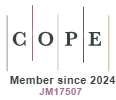Describing primary care in rural Western Province, Papua New Guinea
Mikaela Seymour A B * , Maggy Mase C , Maria Rumints C , Belinda Yamkeok C , Margaret Eko C , Jamee Newland A , Nalisa Neuendorf B , Pamela Toliman B and Angela Kelly-Hanku A B
A B * , Maggy Mase C , Maria Rumints C , Belinda Yamkeok C , Margaret Eko C , Jamee Newland A , Nalisa Neuendorf B , Pamela Toliman B and Angela Kelly-Hanku A B
A
B
C
Abstract
Primary health care is a fundamental pillar of a health system. In Papua New Guinea (PNG), it is the first or only health service in many communities. Despite this, there is insufficient knowledge about the outpatient ambulatory conditions that affect the rural majority. This clinical audit assessed the specific types and frequency of presentations to a rural health outreach patrol in Western Province, PNG.
A retrospective clinical audit of records from outpatient ambulatory presentations between February and October 2021 occurred. All presentations were categorised using the International Classification of Disease 11 (ICD-11). Frequencies were used to determine the most common ICD-11 categories. The top five categories underwent further statistical analysis using odds ratios, assessing for associations with sex, district, and age.
Of the 442 new ambulatory outpatient consults, 55% (n = 243) of patients were female, with a mean age of 30.3 years. The top five ICD-11 categories within this study were ‘signs and symptoms not otherwise specified’ 18.6% (n = 82), ‘respiratory disease’ 12% (n = 53), ‘disease of the digestive system’ 11.3% (n = 50), ‘disease of the musculoskeletal system’ 10.9% (n = 48), and ‘infectious or parasitic disease’ 9.7% (n = 43). There was a statistically significant association between both age and sex and the top five ICD-11 complaints (P-values 0.03 and 0.03, respectively). Those aged less than 20 years had more infectious presentations, compared with those aged more than 40 years, who had more musculoskeletal presentations. The most common specific individual disease presentations were limb pain, tropical ulcer, gastro-oesophageal reflux symptoms, lower back pain, and upper respiratory tract infection. When compared with the outpatient surveillance tally sheet, 63.8% of clinical presentations in this audit would not have been known to the National Department of Health using the existing reporting system.
The key findings of this audit demonstrate that patients in rural locations in the Western Province of PNG present to their ambulatory clinic with conditions that are not currently captured by existing reporting. It suggests that the conditions affecting everyday life are often musculoskeletal as well as infectious, which was not previously reported in the literature. Primary care planners should consider interventions for sub-acute conditions that diminish quality of life when implementing care programs.
Keywords: health needs, health systems, outpatients, outreach, Papua New Guinea, primary care, public health, rural, rural health.
References
1 World Health Organization. Primary health care. Available at https://www.who.int/news-room/fact-sheets/detail/primary-health-care [accessed 1 December 2024].
2 American Academy of Family Physicians. Primary Care. Available at https://www.aafp.org/about/policies/all/primary-care.html [accessed 1 December 2024].
3 Howes S, Mako AA, Swan A, Walton G, Webster T, Wiltshire C. A lost decade? Service delivery and reforms in Papua New Guinea 2002 – 2012. October. 2014. Available at http://hdl.handle.net/1885/139180 [accessed 1 December 2024].
4 Wiltshire C, Watson AHA, Lokinap D, Currie T. Papua New Guinea’s Primary Health Care System: Views from the Frontline. 2020. Available at https://devpolicy.org/publications/reports/PNGs-Primary-Health-Care-System_Wiltshire-Watson-Lokinap-Currie-December-2020.pdf
5 Grundy J, Dakulala P, Wai K, Maalsen A, Whittaker M. Independent State of Papua New Guinea Health System Review. Vol 9 (1). World Health Organization; 2019. pp. 1–201. Available at https://www.who.int/iris/handle/10665/280088 [accessed 1 December 2024].
6 IHME. Papua New Guinea. Institute for Health Metrics and Evaluation. Available at https://www.healthdata.org/research-analysis/health-by-location/profiles/papua-new-guinea [accessed 1 December 2024].
7 Ok Tedi Development Foundation. Western Province. Ok Tedi Development Foundation; 2020. Available at https://otdfpng.org/western-province/ [accessed 1 December 2024].
8 TheGlobalEconomy.com. Papua New Guinea Rural population, percent - data, chart. Available at https://www.theglobaleconomy.com/Papua-New-Guinea/rural_population_percent/ [accessed 1 December 2024].
9 Thompson AE, Anisimowicz Y, Miedema B, Hogg W, Wodchis WP, Aubrey-Bassler K. The influence of gender and other patient characteristics on health care-seeking behaviour: a QUALICOPC study. BMC Fam Pract 2016; 17: 38.
| Crossref | Google Scholar | PubMed |
10 Newland J, Neuendorf N, Vallely L, et al. COVID-19 and Its Impacts on Primary Health Services and Public Health Infectious Disease Programs in Papua New Guinea. UNSW Sydney; 2022. 10.26190/6MHP-GC18
11 Smaghi BS, Collins J, Dagina R, et al. Barriers and enablers experienced by health care workers in swabbing for COVID-19 in Papua New Guinea: A multi-methods cross-sectional study. Int J Infect Dis 2021; 110: S17-S24.
| Crossref | Google Scholar | PubMed |
12 Hetzel M. PNG’s health data: too much of a good thing – part two. Devpolicy Blog from the Development Policy Centre. 10 June 2020. Available at https://devpolicy.org/pngs-health-data-too-much-of-a-good-thing-part-two-20200611/ [accessed 2 December 2024].


